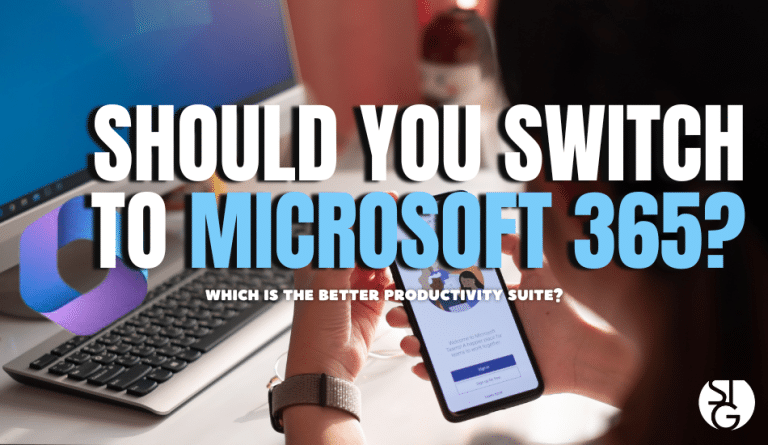We’re going to do a deep dive on the internet’s most used and fasted growing browsers of all time.
Who will win?! Let’s get into it.
If you’re going off user base alone, Google’s Chrome takes first place. With over 2.56 BILLION users, it’s hard to argue that Chrome isn’t the best. But maybe it’s not.
As we say goodbye to Internet Explorer for good this year, another browser takes its place.
Windows Microsoft Edge has entered the building, and it might be the upcoming favorite.
The average person spends about 7 hours per day on the internet. So, it’s safe to assume that you likely have a preference. But what makes you choose one browser over another? Do people prefer Google Chrome because it’s actually the best browser out there, or do they use it because it’s the most popular?
You might be surprised that Microsoft Edge is even a contender for the top. To find out which one is truly the best, let’s do a one-to-one comparison.
Google Chrome Overview
Google Chrome was born in 2008. At the time, Edge’s pre-curser, Internet Explorer, was dominating the market with a peak share of 95%.
Within a few years, Google Chrome was able to surpass Internet Explorer and Mozilla Firefox to become the market leader.
Today, it’s market share is at 65%, and what’s left of Internet Explorer holds .61%
Initially, Chrome was meant to run on Windows and was later available for Linux, macOS, iOS, and Android. The majority of Chrome’s source code comes from Google’s free, open-source software project, Chromium.
This browser and many others, are constantly fighting for majority market share.
Microsoft Edge Overview
Microsoft’s Edge was introduced alongside Windows 10 and Xbox One in 2015.
Even though Edge was meant to replace Internet Explorer as the primary web browser, IE has only this year been fully removed.
Edge was originally an HTML-based browser, but in 2020, Microsoft announced a new version of Edge based on Chromium, the same Google open-source software used by Chrome. Microsoft Edge is now available for Windows, macOS, Android, iOS, and Linux.
The switch to Chromium makes Microsoft Edge that much more competitive with Chrome, in several ways. However, it still hovers around 10% of Market share with only 153 million users.
Edge has quite the journey ahead to over taking Chromes top spot. But just because Edge isn’t currently in the top spot, doesn’t mean it can’t get there. Especially if they truly are the superior browser.
Key Features
Next, I’d like to go over some key features for each browser.
Before we take a deeper look into both, let’s point out some key features that I think are worth noting.
For Chrome we have:
- Device Synchronization
- Horizontal Tabs
- Tab Grouping
- Bookmarks
- Reading List
- Browser History
- Password Manager
- Extensions
- Task Manager
- Themes
- Incognito Browsing
For Edge we:
- also have Device Synchronization and Horizontal Tabs
- Favorites,
- Collections
- Browser History
- Extensions
- Password Manager
- Multiple Privacy Levels
- Immersive Reader
- and Private Browsing
Comparing Edge vs. Chrome
Off the bat, you can see that both have plenty of similar features. As natural competitors, Microsoft and Google don’t typically allow significant gaps between their products to persist.
They have almost always been tied for first place.
Both can be used for private browsing and seamless web navigation, and it’s easy to clear caches. Nevertheless, there are a few distinctions.
Let’s go over each individually.
User Interface
If you already use Google Chrome, the user interface of Microsoft Edge will feel very familiar. And vice versa.
For instance, you can have multiple tabs open in one window and bookmark your favorite websites.
The differences are minimal and largely come down to individual preference.
Tabs
Both Chrome and Edge arrange tabs in a row at the top of the screen by default.
However, Edge provides the option to switch to a row of vertical tabs on the left side of the page. Chrome lacks an equivalent built-in vertical tab option.
There are Chrome Web Store plugins that can achieve a similar look, but none of them operate as seamlessly as Microsoft Edge’s built in vertical tabs.
Both browsers allow you to create tab groups.
Both allow you to set a color and name for each group and will automatically rearrange your tabs such that tabs belonging to the same group are next to each other.
Bookmarks and Favorites
Chrome calls them bookmarks and Edge refers to them as favorites.
Both are identical and you can save your favorite pages for later access.
The “Collections” feature in Microsoft Edge is a tool to group links together.
Links, images and text can be added to collections. You can also take notes on your collections.
Themes and Dark Modes
If the look of Chrome or Edge doesn’t suit you, there are many different custom themes to choose from.
You can view Chrome themes in the Chrome Web Store.
Although there isn’t a specific “Dark Mode,” many of the available themes are dark.
If you’re using Edge, the Appearance settings page allows you to slightly alter the appearance of your browser.
Select a theme, then decide whether you want the appearance to be light, dark, or default overall.
If you want something different from the 14 preset options, you can get a theme through the Edge Store or Chrome Store.
Immersive Reader
A feature exclusive to Microsoft Edge is the immersive reader.
The page you’re reading is transformed into an e book-like format with a clean layout.
Chrome does not offer a feature like this, but you can add it with an extension.
Search Engine
Microsoft Edge utilizes Bing as its default search engine, while Google Chrome uses Google by default.
However, either browser allows you to simply change the default search engine, so this shouldn’t affect your choice.
Performance
Let’s talk about speed, which is a feature that distinguishes Microsoft Edge from Google Chrome.
When Edge originally launched, Microsoft asserted that it was 112% faster than Chrome.
Although the exact accuracy of this statistic is difficult to determine, other people have conducted their own testing and reached the same conclusion: Edge is faster than Chrome.
Additionally, Chrome has a reputation for using a lot of resources.
In a test on this by Tom’s Guide, it was discovered that Chrome consistently consumed more RAM.
For instance, Chrome utilized 3.7 GB when 60 tabs were active, whereas Edge only used 2.9 GB.
Backup and Syncing
Edge previously offered only a few syncing options. One feature that was lacking was the ability to sync your history across devices.
Microsoft, however, began releasing these features in 2021. Now that Chrome can almost do everything, Edge can too, including:
- Bookmarks/favorites
- Extensions
- History
- Settings
- Active tabs
- Passwords
- Addresses
- Payment procedures
Cross-device syncing on Edge must be manually enabled in the settings.
By default, Chrome will sync your devices, but you may disable it if you prefer.
The easiest approach to guarantee that your preferences and favorites are backed up in case of an issue is to enable syncing.
Security and Privacy
The big one.
Browsers are one of the most common targets for malware. About 30% of PC exploit attacks happen through web browsers.
Selecting a browser with strong security features is ESSENTIAL.
Browsers should contain privacy options that enable users some choice over how their data is used, in addition to safeguarding against cyberattacks.
First things first: Neither Chrome nor Edge are the safest or most private browsers available. Browsers like Tor, Brave, and Firefox are better options if privacy is your first goal.
But there are some helpful security features in Edge and Chrome.
Edge’s privacy options are simpler to comprehend and control. A list of blacklisted trackers is available, and you may select from three different levels of tracking prevention.
Chrome only lets you request “do not track” on websites.
Cookies from websites you visit can be managed in both browsers.
Microsoft Edge uses Windows Defender SmartScreen to safeguard users against malware and phishing.
Anti-malware tools are also included in Chrome.
These both function well, and if you keep them updated, either browser should be comparatively safe from attacks.
The speed at which Chrome releases updates ensures that any malware vulnerability is promptly fixed.
Although not quite as swiftly as Chrome, Edge also receives regular updates.
Google is being sued for allegedly gathering data from customers who are browsing incognito mode, while collecting more of your info than Microsoft.
Extensions
There really wasn’t a competition when it came to extensions until recently.
Chrome has the obvious lead on the amount of extensions they have available on the web store. There are over 150,000 extensions currently available on Chrome.
Versus a handful of extensions called “add-ons” on Edge. However, now that Edge is on Chromium, you can use any extensions that Chrome can.
The reverse is not so simple. Chrome basically cannot use Microsoft add-ons.
Either way, you have access to thousands of extensions through both browsers.
Integrations
Chrome, as part of the extensive Google ecosystem, includes Gmail, Google Calendar, Google Drive, Google Maps, and other services.
Many of the Google tools work perfectly well with Edge too.
Chrome does have a few advantages because of its interaction with the Google ecosystem, though.
For example, both browsers let you translate pages from other languages, but Chrome does it using Google Translate, a much better app than Edge’s Microsoft Translator.
Microsoft has its fair share of integrations. Most notably, you can open Microsoft Office documents and edit directly within Edge.
Other Features
One cool feature I wanted to note for Edge that Chrome does not have is its Coupon Finder.
As you online shop, Edge will notify you of any available coupons.
What Do You Think?
So Which Browser is better? Chrome or Edge?
In the past, the comparison between Chrome and Edge typically leaned towards Chrome having features that Edge didn’t
But now, there are few of those features left.
Microsoft has done a great job incorporating Chrome’s top features into Edge. Especially with Edge on Chromium, the differences between the two are so minimal.
It may come down to preference. However, with all the improvements, Edge has the edge.
If you value speed and low resource consumption, you really may want to choose Microsoft Edge over Chrome.
Edge is a great browser with a rising market share, but it still has a long way to go before it catches up to Google Chrome.
It’s worth a second look if you haven’t used it since before the changeover to Chromium!
Of course, Google Chrome is extremely well-liked for a reason, and the company will undoubtedly keep enhancing it and adding new features.
Cybersecurity should be all businesses top priority. It starts with good password management. Stay protected by checking out our list for Top Password Managers for Businesses from 2022.
Trying to figure out which browser is right for your business? Feel free to book a time to chat with us via the Calendly link below. I’d love to offer some suggestions to help get you started.
Click here to schedule a free 15-minute meeting with Stan Kats, our Founder and Chief Technologist.
STG IT Consulting Group proudly provides IT Service for Small to Medium Businesses in Greater Los Angeles. We’d love to see if we can help you too!




